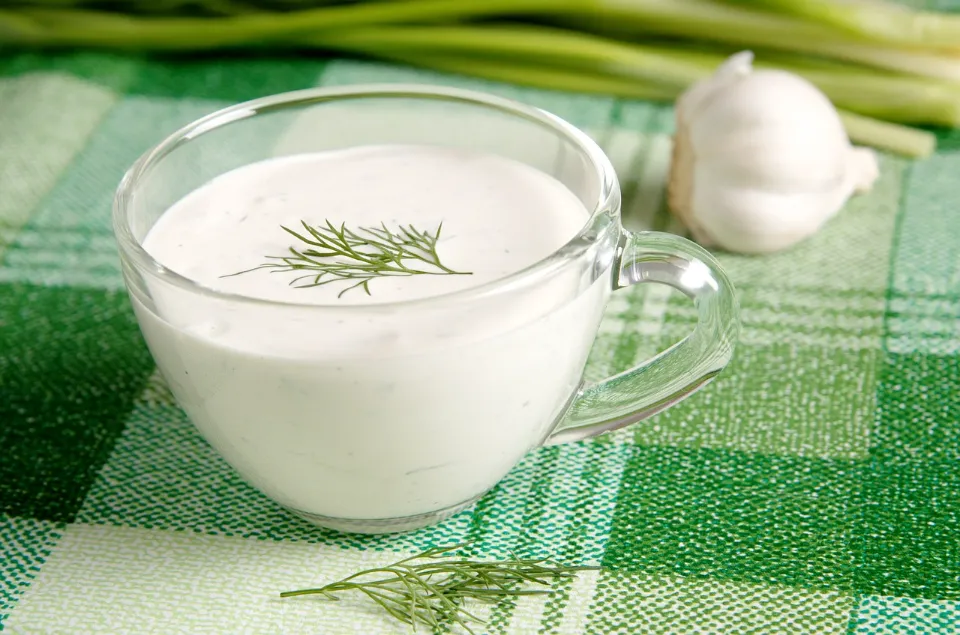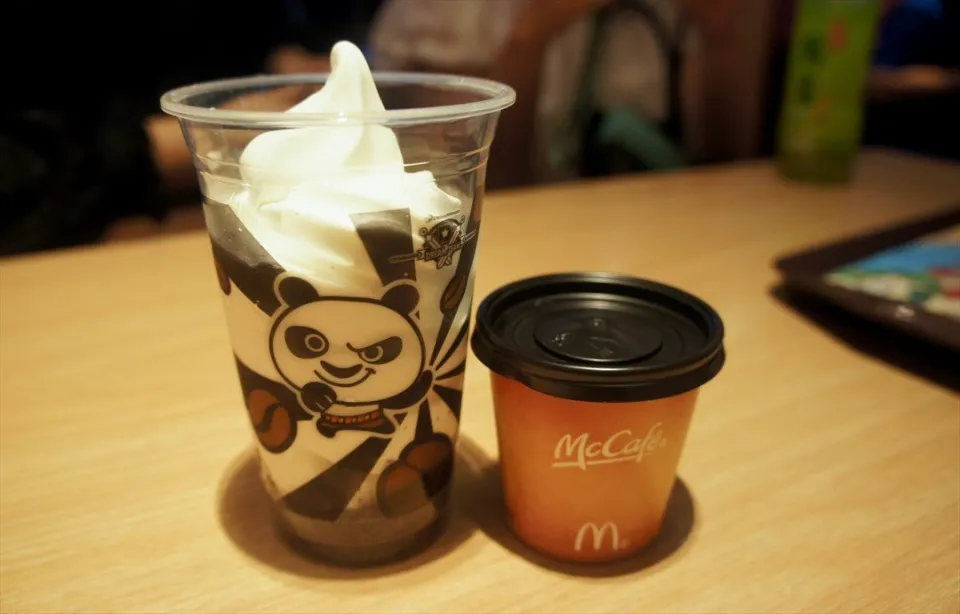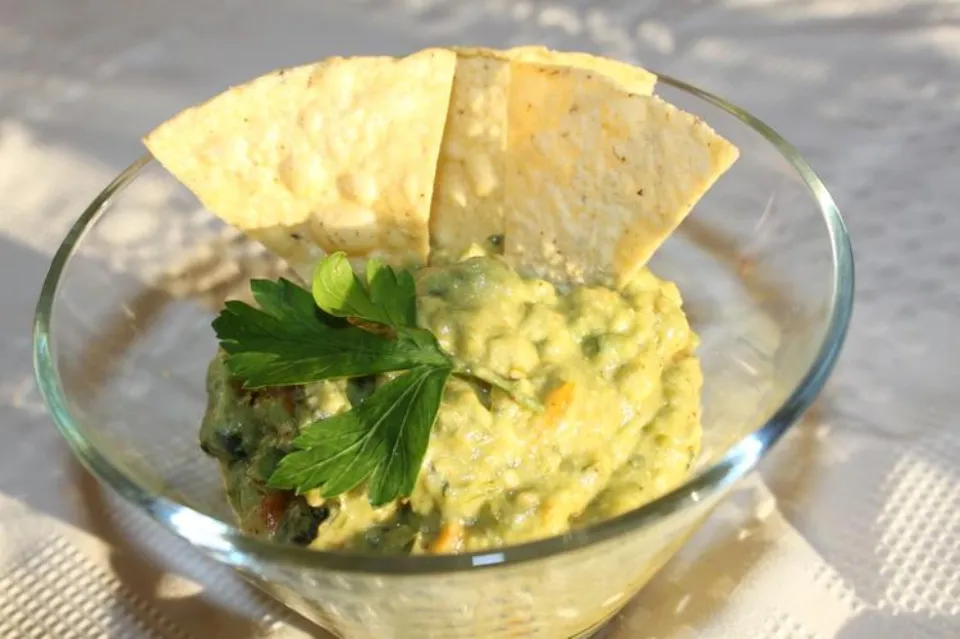CorningWare is a popular brand among homeowners that has been manufacturing a variety of containers for over 60 years. Because of the wide range of CorningWare products available, it has become a common name in every household. CorningWare containers are available in different types of mixes. They typically come in either glass or ceramic.
Can you safely microwave Corning Ware? Corningware can indeed be used in a microwave. They can withstand heat up to 450 Kelvin, or 850 degrees Fahrenheit, in a microwave.
While heating food in Corning ware, there are additional safety precautions that should be taken. Let’s proceed step by step through the in-depth discussion.
Can CorningWare Go Inside Microwave?
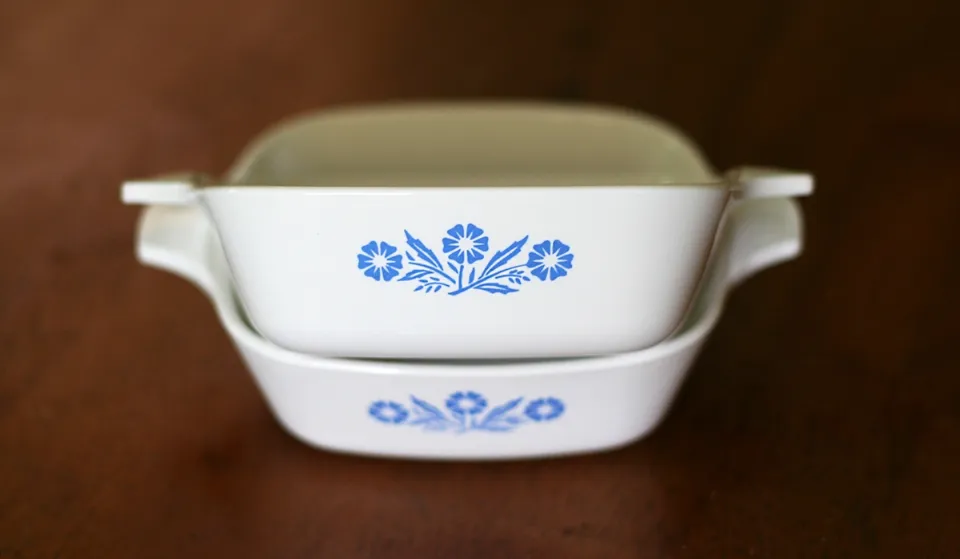
Products made by CorningWare, including both the French White and Gold lines, are safe to microwave. However, one should ensure that there are no metal parts attached to the CorningWare container.
Products made of CorningWare are not just microwave-safe. Convection ovens, conventional ovens, and microwaves can all be used to cook with CorningWare ceramic, glass, stoneware, or ovenware. Even better, the containers are completely secure to be moved directly from the refrigerator to the oven. It is unnecessary for the container to acclimate to room temperature.
Having said that CorningWare can go inside a microwave, it’s important to mention that one should always use CorningWare products in low to medium temperatures inside the microwave. Also keep in mind that products could crack from improper heating.
Is CorningWare Microwave-safe?
Dishes made of CorningWare can be microwaved. They can withstand temperatures up to 450 Kelvin or 850 °F inside a microwave, without cracking or showing any signs of deformation. CorningWare products are made up of Pyroceram, which accounts for their high heat resistance.
Glass ceramics and cookware dishes, two examples of CorningWare products, all have a microwave-safe logo on their packaging. Quite often, the words “microwave” can also be found etched on the product. Millions of people have been using microwave-safe CorningWare products for several purposes for decades now
As long as the Corning cookware doesn’t have cracks, gaps, or holes, it’s completely “microwave-safe” . Metal bottoms, designed for equal heat distribution when used on the stove, were present in very few CorningWare products. The microwave should not be used for these products. This warning was prominently displayed on the cookware as well as in the packaging. However, the most recent CorningWare products don’t have metal bottoms.
Is Old CorningWare Microwave-safe?
Products produced before 1999 are referred to as Vintage CorningWare. This indicates that these items were produced prior to the invention of microwaves. So it makes perfect sense that vintage CorningWare products don’t meet microwave safety requirements.
Products with a silver, gold, or platinum leaf on them, aside from vintage CorningWare, should not be microwaved. Also, products with solid glass lids and screw-on knobs aren’t safe to go inside a microwave.
Why is Corning Ware Considered Microwave Safe?
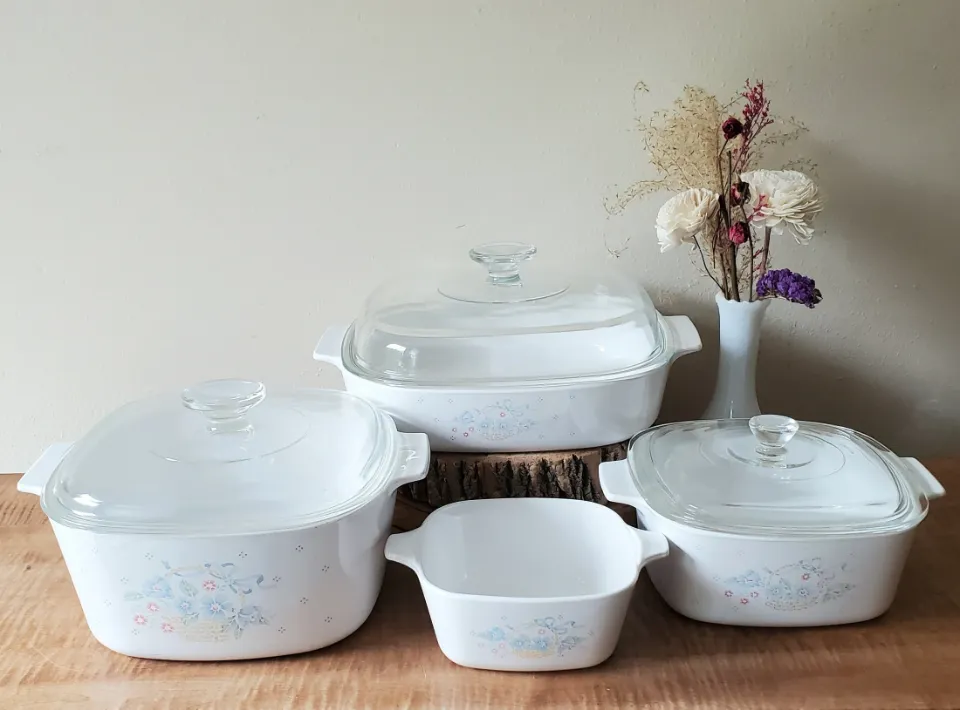
When determining whether a piece of cookware is microwave-safe, three factors are taken into account.
One, the cookware should withstand high microwaving temperatures without melting or burning.
Two, the cookware should not leach toxic substances into food when subjected to high temperatures.
Three, microwave-safe cookware should not reflect microwaves used in heating. Corning Ware fits into the class of microwave-safe cookware in all dimensions since:
It Can Withstand High Temperatures
High temperatures are well tolerated by Corning Ware. The manufacturer claims that it can withstand temperatures of 425 degrees Fahrenheit.
Your Corning Wear won’t melt, degrade, or burn while in use because the typical microwaves have a maximum temperature setting of 212 degrees Fahrenheit. Unsurprisingly, Corning Ware is a great choice for cooking food in a microwave at high temperatures while boiling, roasting, browning, or steaming.
Corning Ware is Food-Safe
Pyroceram, the substance used to make Corning Ware, is non-toxic. It is free of harmful substances like styrene, phthalates, and Bisphenol-A. The non-porous interior of the cookware prevents odor, flavors, and stains from soaking in and contaminating your food while it is being microwaved.
On vintage Corning Ware, however, you should exercise caution because the exterior finish may have lead traces.
Corning Ware is Durable
Regular exposure to high temperatures in a microwave accelerates the wear and tear of thermoplastic, glass, and Tupperware utensils. They hardly ever reach their maximum lifespan when frequently used for microwave cooking. In contrast to less resilient materials, Corning Ware keeps its integrity even after numerous microwave cycles.
Corning Ware Can Withstand Sudden Temperature Shifts
A sudden change in temperature can cause some bakeware, particularly glass and stoneware, to break. Uneven expansion and contraction led to the damage. It’s different with Corning Ware.
It won’t crack or break even in the most extreme temperature changes. The manufacturer claims that Corning Ware can withstand a temperature shock of up to 840 degrees Fahrenheit.
What Happens If You Microwave CorningWare?
The CorningWare ceramic, glass or glass-ceramic containers are invisible to the microwave radiation which means they simply allow the waves to pass through them and heat the food inside.
It goes without saying that CorningWare containers should be heated gently. Additionally, it’s critical to confirm that the container is empty of any fillings.
Safety Tips: Things to Know before Microwaving CorningWare
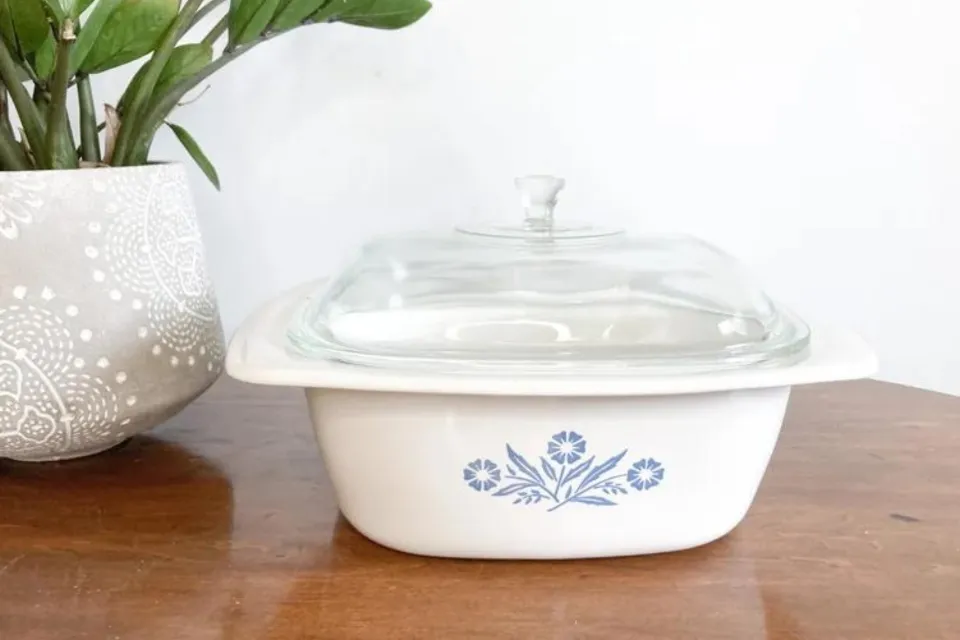
Although CorningWare products can be microwaved, there are a few things to keep in mind to ensure the food, oven, and product’s longevity.
People are already aware to keep a low to medium temperature. In addition, there are a few other safety advices.
Before you put CorningWare in the microwave, make sure you go through the following safety tips mentioned below:
Examine the Container Properly
Before putting any CorningWare in the microwave, flip your dish to see its bottom. Now look at what is written there. Dishes with microwave warning labels are those that should not be heated in a microwave. Before placing a dish inside the oven, make sure it can be microwaved.
Don’t Fill the Container to the Brim
The CorningWare container must be halfway full if you want to warm water. Fill the CorningWare dish with a liter of water that has been placed inside a bottle. Do not microwave for longer than 30 seconds. After turning on the microwave, stay put and don’t get distracted by other activities.
Restricted Foods
Though it says that CorningWare products can withstand extreme temperature changes, they may crack or fracture sometimes. Because of this, people shouldn’t heat prepackaged food items in CorningWare products.
Additionally, heating or microwaving popcorn in a CorningWare dish is not advised. Due to the fact that these products have special browning wrappers that produce excessive heat, people are advised to avoid them.
Appliance Restrictions
There are a few microwave models that have an internal browning element that is designed to make any food crispier. If you have such a type of microwave, you shouldn’t put CorningWare inside. The product may fracture or break as a result. Therefore, regardless of the type of dish, people must not use CorningWare in conjunction with a browning feature.
A CorningWare dish that is empty or only partially filled should not be heated at the same time. Then, heat it after you’ve added enough food.
Proper Maintenance
It is important to take good care of Corning ware while using it. Don’t let the water sit in the CorningWare dishes for an extended period of time after cleaning them with water. The product’s lifespan may be shortened as a result. Additionally, it will have an impact on the dish’s ability to withstand repeated microwaving.
Final Thoughts
As you can see, the latest CorningWare dishes , be it glass, ceramic, ovenware or earthenware are microwavable. To enjoy safe heating of CorningWare in the microwave, there are a few requirements and safety precautions that one must adhere to.
Utilizing your valuable cookware in the freezer, toaster oven, and microwave will be simple if you keep these suggestions in mind. You could also use Corningware over Dutch ovens without worry. Get yourself a piece of Corningware the next time you browse thrift stores!
Check the following guides to learn what kind of materials can be put in the microwave!
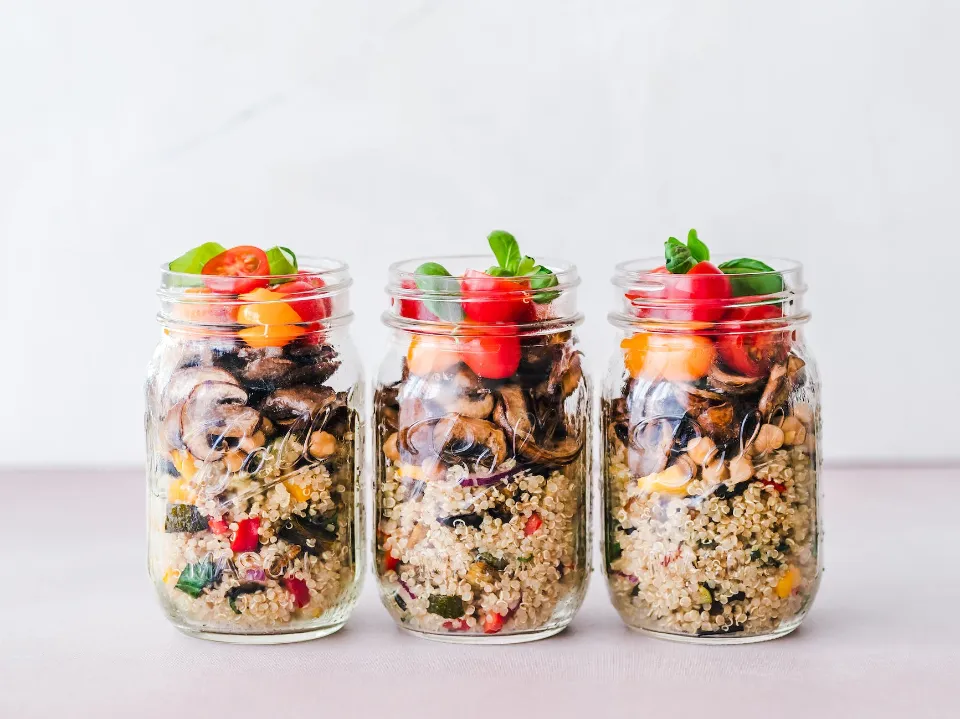
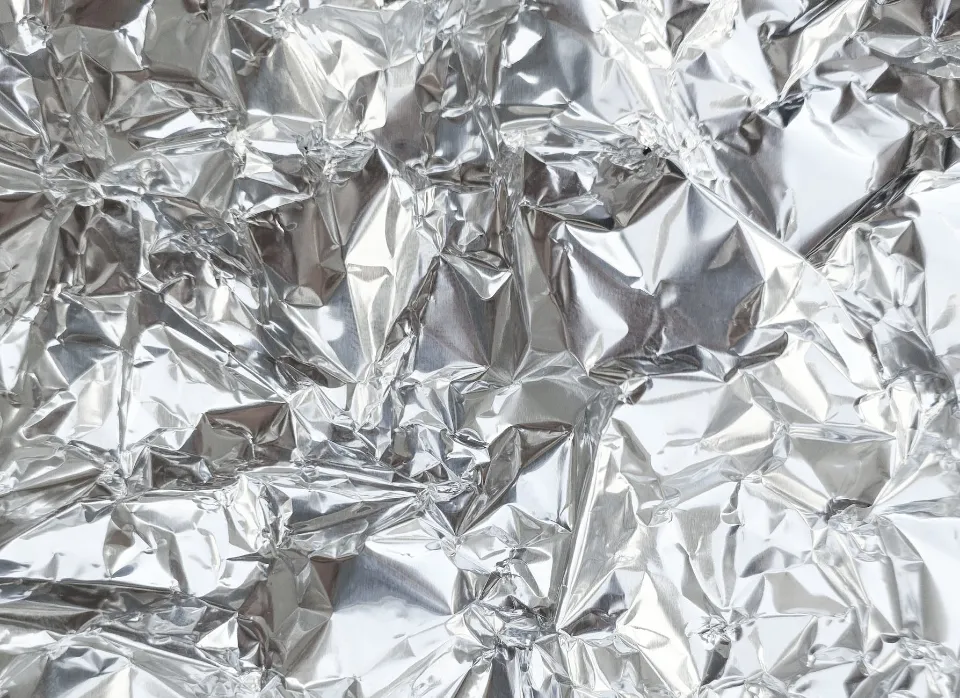
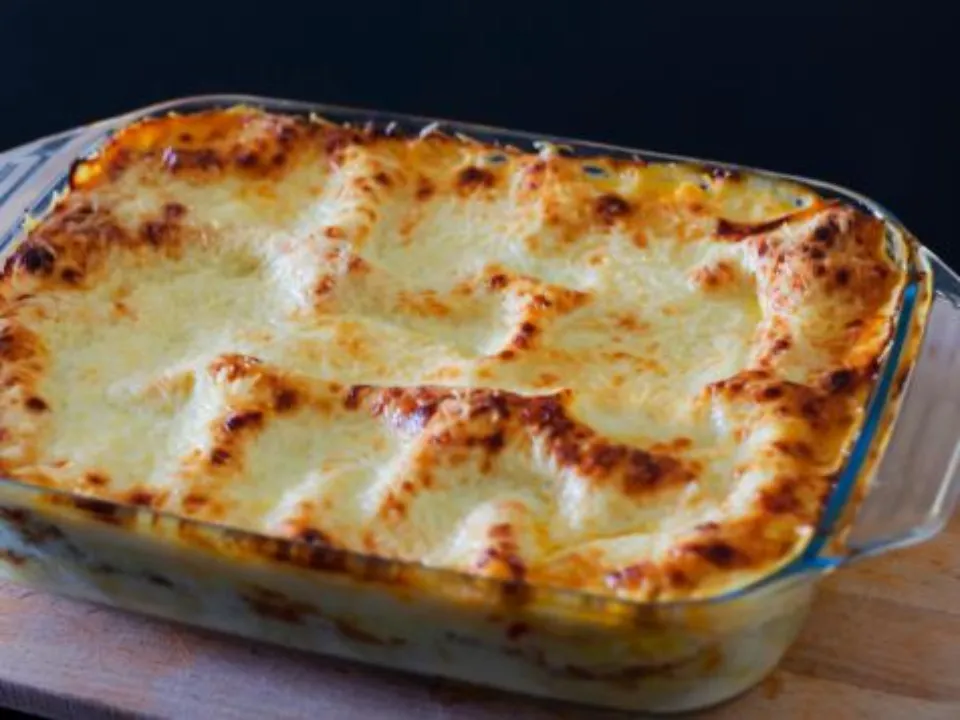
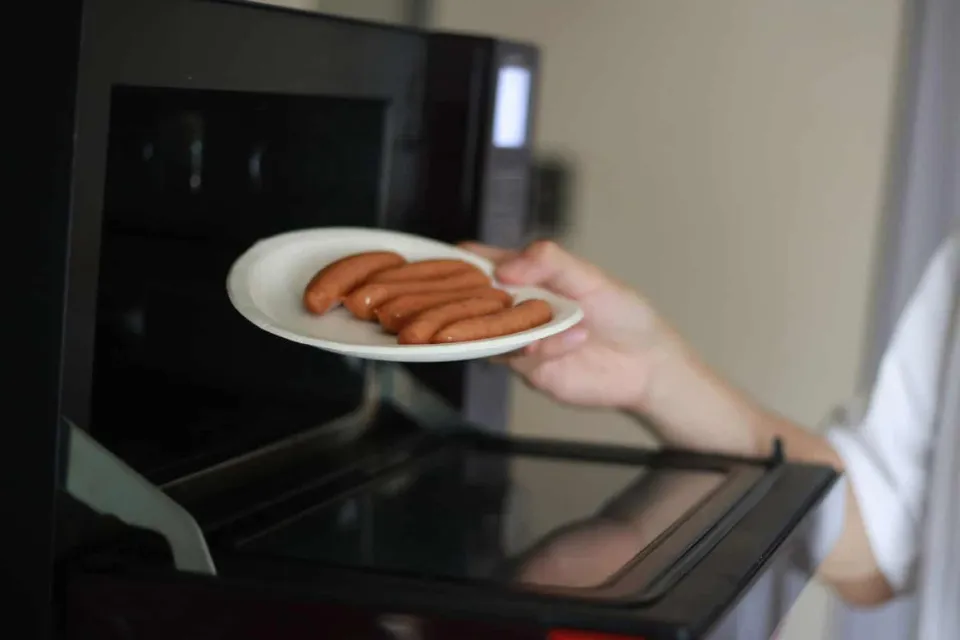
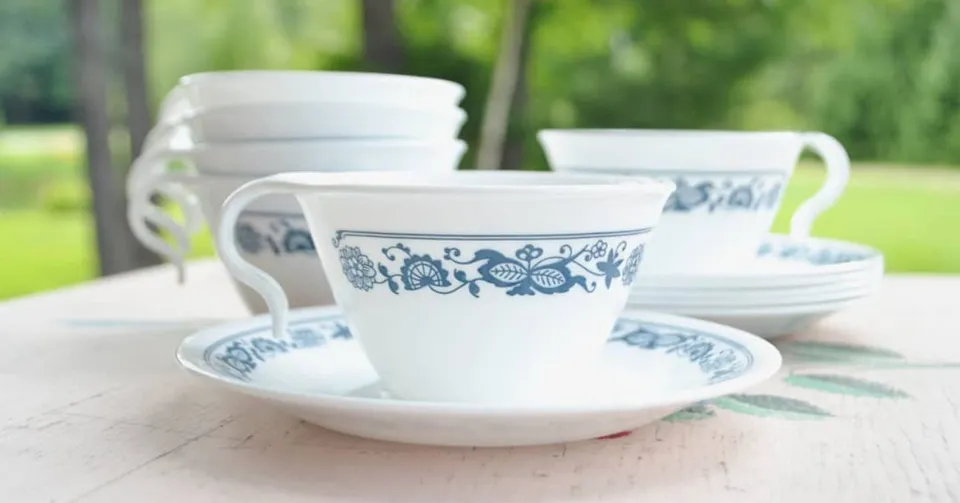
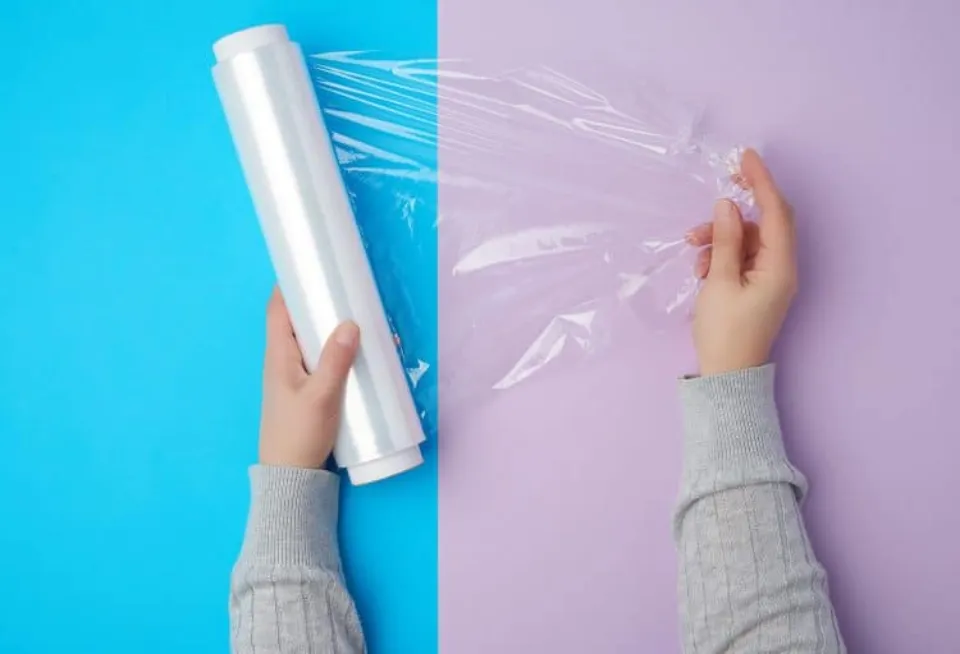
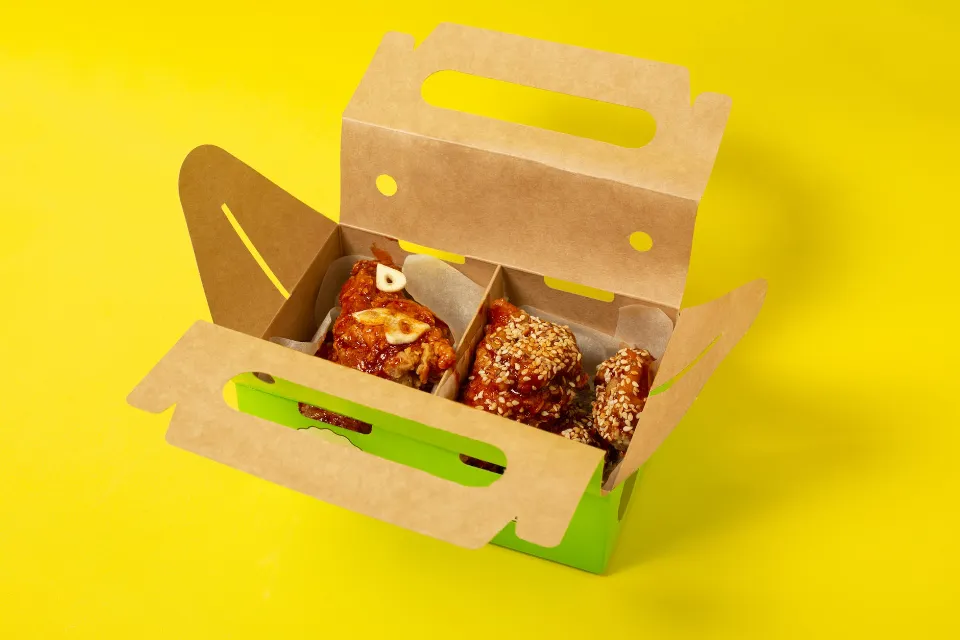
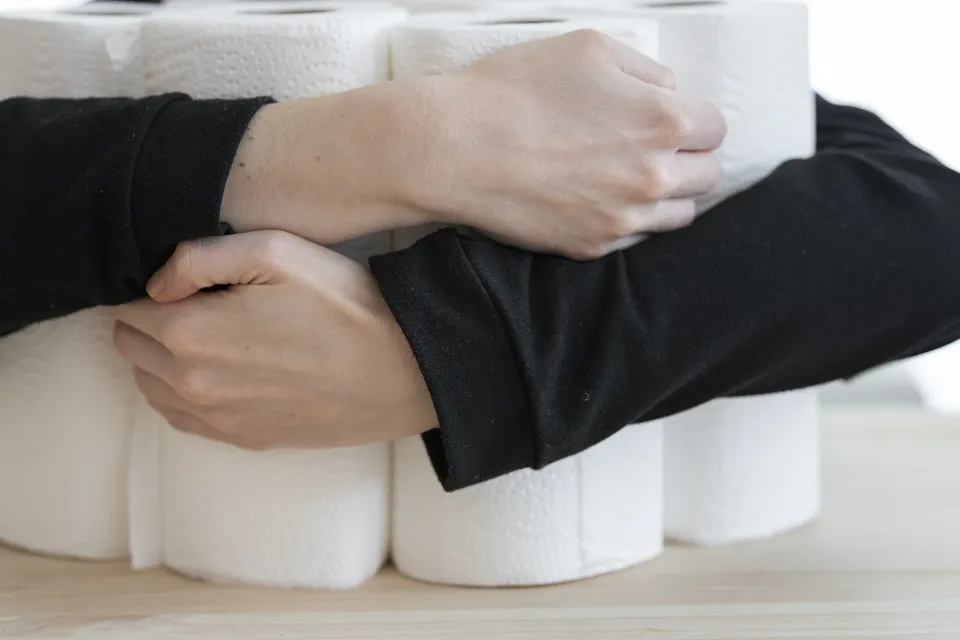
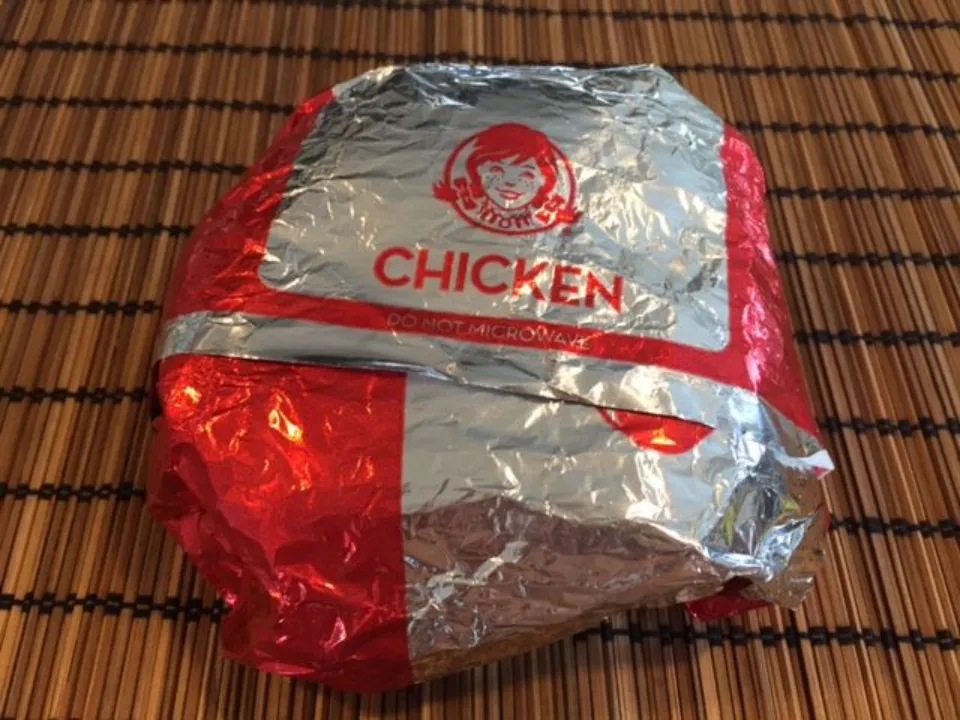
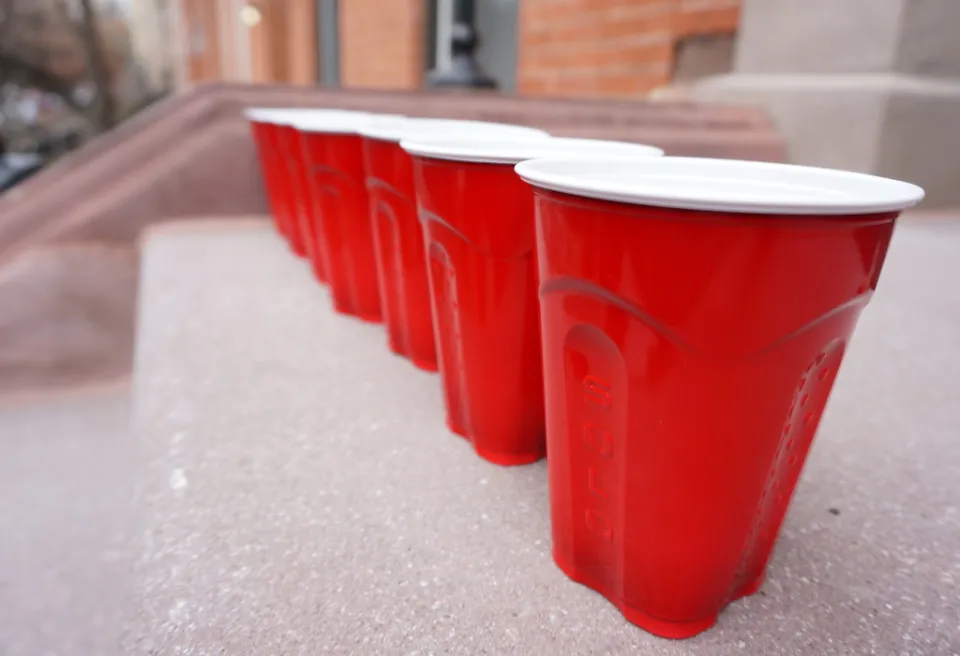
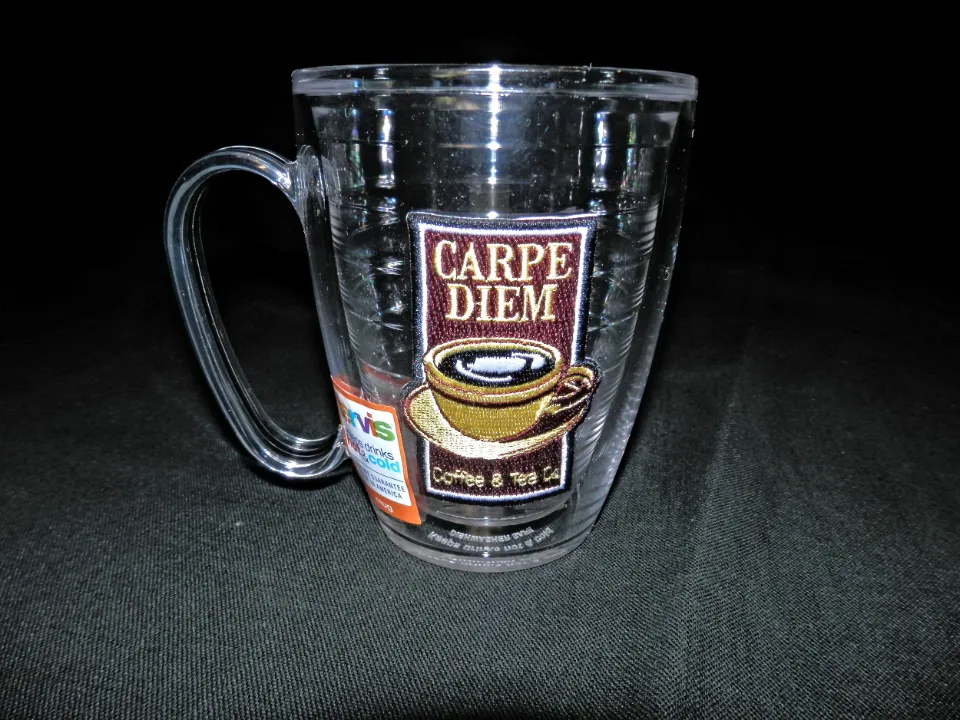


Frequently Asked Questions (FAQs)
Is Corningware Stoneware Dishwasher Safe?
You can put Corningware stoneware in the dishwasher.
Corningware stoneware is made of high-quality tempered glass designed to withstand high temperatures. As a result, you can safely wash Corning ware stoneware in the dishwasher.
All Corningware bakeware products can withstand repeated washings without losing their shape or color, making them more resilient than many other types of cookware. Therefore, Corning ware stoneware is a great choice if you’re looking for cookware that is durable and simple to clean.
Can You Put Corningware in the Dishwasher?
Corningware is suitable for dishwasher use. The dishwasher can be used to clean every other piece of Corningware bakeware.
Can Corningware Go in the Freezer?
Yes, Corningware can be placed in the freezer.
Corningware is the perfect material to use in the freezer because it can withstand both intense heat and cold. Just be sure to leave some headspace in the dish to allow for contraction as the food freezes. Never cover a hot plate with the storage lid until it has cooled all the way to avoid a thermal shock.
And when you’re ready to eat, thaw the food in the refrigerator overnight before reheating.


